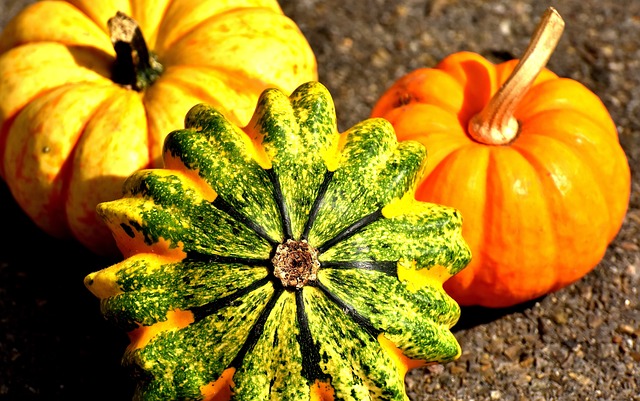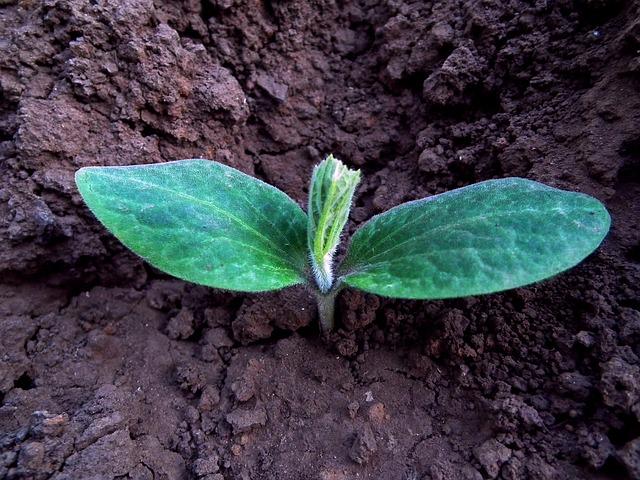When To Fertilize Pumpkins? Learn About Pumpkin Fertilizing Schedule

Pumpkins are heavy feeders. There are various types of pumpkin fertilizers required at different stages of their development to encourage plant growth. A general-purpose balanced fertilizer with a 10-10-10 (NPK) fertilizer ratio may not be enough to maximize the development.
Before planting, prepare a good, well-drained soil mixed with homemade fertilizer prepared from compost or well-rotted manure. To help it develop, use a nitrogen-rich fertilizer at the start of the growing season, but don’t put it too close to the plant to avoid scorching it. Use a phosphorus-rich fertilizer as the flowers begin to develop and form; this will aid in the production of more blossoms and fruit. Finally, fertilize with a potassium-rich fertilizer to ensure a robust harvest once the pumpkins begin to appear. Use this fertilizer sparingly because it has the potential to burst the skin and erupt due to its rapid development. To know more about when to fertilize pumpkins, keep on reading!
Table of Contents
Pumpkin Fertilizing Schedule
Before Blooms
You must ensure that your vine has adequate nitrogen before it begins to flower in the first 55 days. Due to its chlorophyll molecule, which is responsible for a plant’s green-colored leaves, stems, and vines, nitrogen is critical for early growth. This chemical absorbs solar energy and converts it to sugars, which are then used to feed the plant called photosynthesis.
Thus, throughout the second and third stages of growth, your pumpkin will get enough nitrogen while also getting enough phosphate and potassium. Feed your plant every 2-3 weeks until it flowers, then every 40-45 days after germination.
Flowering
Around day 55, after germination, the vines of your plant will begin to develop blossoms. Your plant will demand phosphate during this time. This component is necessary because it contains adenosine triphosphate (ATP), which gives the plant the energy to create buds and fruit.
The plant will not bloom if it lacks phosphorus. Even if the plant blooms, its buds may not open, and fertilized fruits may be aborted if the plant lacks the energy to develop larger.
Stop providing extra nitrogen and start using bone meal fertilizer 40-45 days after germination, before blooms show.
Apply bone meal fertilizer to the soil every 1-2 weeks as directed on the container for maximum results. Just keep an eye out for phosphorous overfertilization. Stop applying phosphorus when the plant’s leaves begin to yellow around the margins.
Increase the potassium in your fertilizer after your plant produces little fruits on its vine.
Fruiting
When your pumpkins start to grow, don’t cut back on the phosphorus too much, but make sure they get enough potassium.
Potassium is also important for ATP synthesis since it helps maintain the amount of carbohydrates and water stored in your plant’s tissues while increasing protein and starch formation in gourds.
You can use a 5-10-10 fertilizer that is strong in potassium and phosphorus to fertilize your pumpkin. Alternatively, continue to utilize plant bone meal and supplement with seaweed powder for a K source.
How to Fertilize Pumpkin Plants

Let’s talk about how to fertilize pumpkin plants now that we know when. So, during pre-flowering, we want to fertilize the plant with a nitrogen-rich fertilizer, phosphorus-rich fertilizer during flowering, and potassium-rich fertilizer when the plant is fruiting.
Always follow the manufacturer’s recommendations, which call for 1 1/2 pounds of fertilizer per 100 square feet (9 square meters). When using granular fertilizers, make sure they’re spread evenly around the plant rather than on it.
It is, however, acceptable to use water-soluble or liquid fertilizers. When nitrogen fertilizer comes into direct contact with the leaves or vines, it can burn the plant.
Remember to water your plants! Start with granular fertilizers and work your way up to liquid fertilizers, which are a little more expensive.
